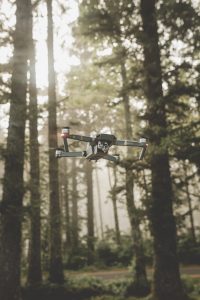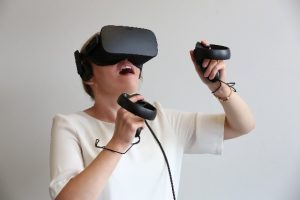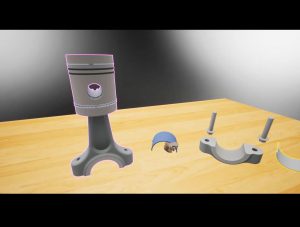
July 15, 2020, by Ben Bedwell
A call for new Digital Initiatives
This post introduces our Digital Initiatives from 2019-20 and invites you to apply to work with us on Digital Initiatives in the coming year.
“Digital Initiatives” have been part of the way Digital Research engages with the research community for the last four years. Since the start of 2016, Digital Research has helped fund almost 50 of these projects. Each project involved collaboration with UoN researchers, allowing the projects to take risks and explore the research benefits of novel technologies, or simply prove whether those technologies have a place in research. Some succeeded by leading to funding and publications, by developing the University’s digital research environment, or enhancing our culture of digital use and innovation. Others succeeded by “failing fast” and providing valuable lessons about technologies that aren’t ready for real-world use, are too complex, or are incompatible with University infrastructure, funder requirements, or political constraints. A new SharePoint page here showcases some past highlights.
We began this year with eight exciting new Digital Initiatives, and an approach that emphasised a closer working relationship between the researchers who led the projects and technical experts in Information Services.
Spotlight on … lowering barriers to 3D capture and virtual reality
There are many research disciplines that benefit from being able to digitally capture 3D objects and turn these into interactive experiences. Reflecting this, several of the Initiatives this year have mapped ways of capturing and presenting in 3D without the need to call on a technical expert.
One Digital Initiative identified a workflow to quickly and cheaply capture objects in situations where a researcher might only be able to capture a handful of smartphone images: see this blog post for more. This makes 3D capture possible for researchers such as John Burford, who needs quickly to examine and record the anatomy of large animals in veterinary and conservation settings.
 |
 |
| Photographic drone | 3D terrain model created by Steve via photogrammetry |
At the other end of the scale, a second Initiative is testing the University’s High-Performance Computer to combine many high-resolution images into 3D models. If successful, this will allow researchers to generate far more complex 3D objects than would otherwise be possible. Stephen Dugdale is leading this work, with the aim of turning thousands of photographs of river courses taken by aerial drones into complex 3D models that can accurately simulate long-term effects such as erosion.
A third Initiative is tackling the next step in the process: turning 3D models into interactive experiences for research engagement and teaching. This project is exploring easy-to-use software that will allow staff to create simple virtual reality experiences that allow the viewer to manipulate and even deconstruct 3D models using VR kit like the Oculus Quest. Glyn Lawson and Kishen Rengaraj have led this work, which will allow researchers and students to create 3D models, but then explore and redesign the models by “handling” them in an immersive environment rather than viewing them on a screen.
 |
 |
| VR kit being used to manipulate 3D models in the Digital Transformations Hub | Piston model being deconstructed by Kishen in 3D environment during testing |
Beyond 3D and VR, our other Digital Initiatives this year have explored a variety of topics:
- Tim Self and others from groups including SLIM have looked at simple solutions to allow older, high-value digital research kit to be safely connected to the University network.
- Nils Jaeger and colleagues have developed a prototype smartwatch app to allow researchers to gather experiential data from participants in real-world settings, e.g. to study people’s physiological responses to architecture.
- Gary Mirams and team have explored Microsoft Azure’s services for containerising and deploying code (using Docker and Kubernetes), to make predictive electrophysiology models portable and re-usable.
- As well as working with Gary, the Digital Research Service have compared the cost and performance of a range of different Azure services for hosting interactive web pages and datasets.
A call for new Digital Initiatives
Is there a digital technology that could advance your research, or open new opportunities for collaboration? Have you discovered a new digital method during lockdown that you’d like to explore further? We have just opened a call for new Digital Initiatives: details are available at the Digital Research SharePoint.
Sorry, comments are closed!
